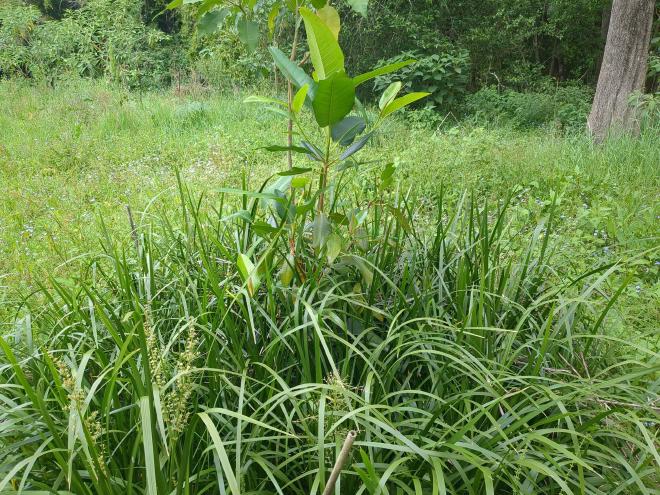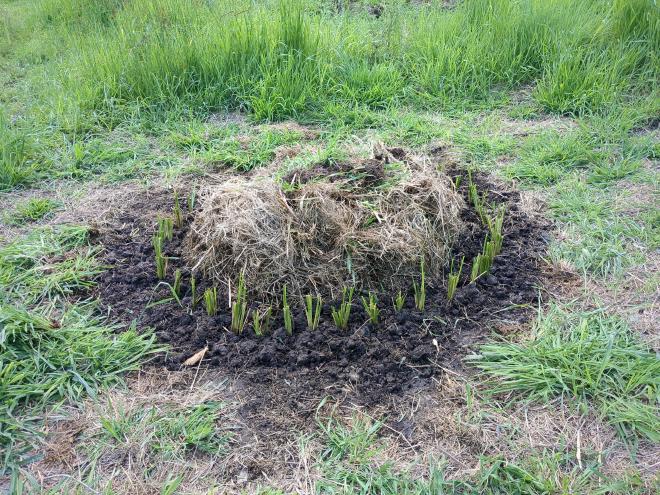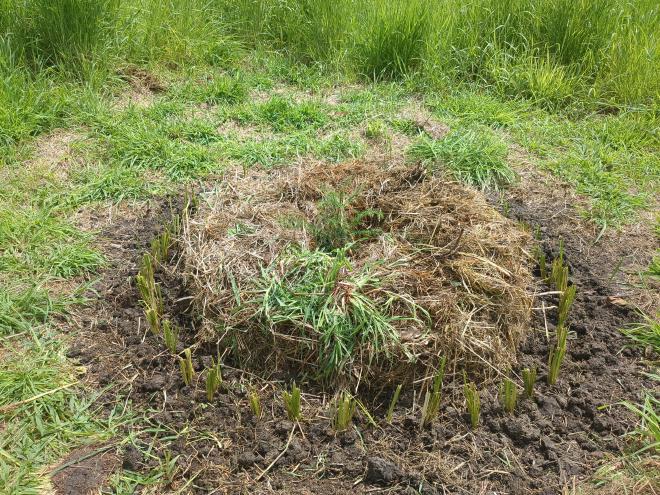Integrating Vetiver with Tree Planting
Often when establishing spaced out trees in a larger paddock area, one has to deal with pasture grass and weeds putting pressure on the young trees, usually growing over them and/or choking them out. To combat this, most people mow/brushcut regularly or spray out the grass. The lucky ones can buy woody mulch to use but that is not cheap and has a larger carbon footprint. Some of us choose only to use what is immediately growing in the area, like the grass and weeds themselves.
Now, you may be familiar with Vetiver Row Mulching techniques and the below will be similar to this but individually circular, rather than mixed rows. This allows a slower lower-impact planting to establish over time and at greater overall spacing.
First, allow your pasture grass to get thick. It makes it harder to cut but the amount of material available greatly increases. Move to the centre of the proposed planting space and scalp the grass nice and low. Moving counterclockwise, sweep new cut grass into that chosen centre scalping and spiraling outwards until 2 large and full rotations are swept in. Using a metal blade with longer blade arms helps for this as the grass stays long and thick, rather than cut up like with a slasher or mower.
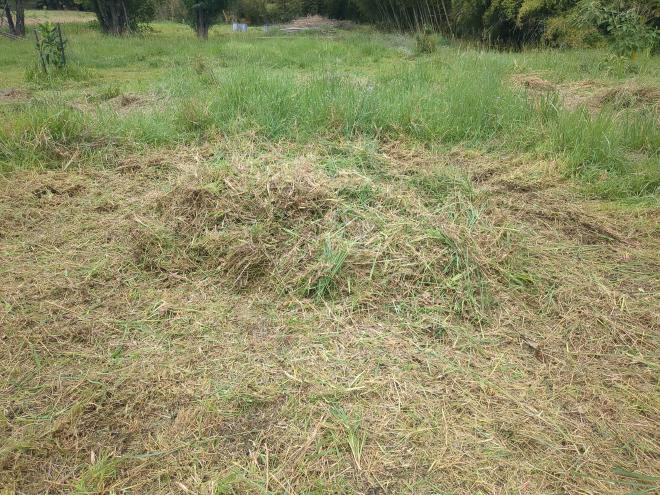
Here is 1 of 9, approximately 5+m apart, mulch circles 3 weeks later.
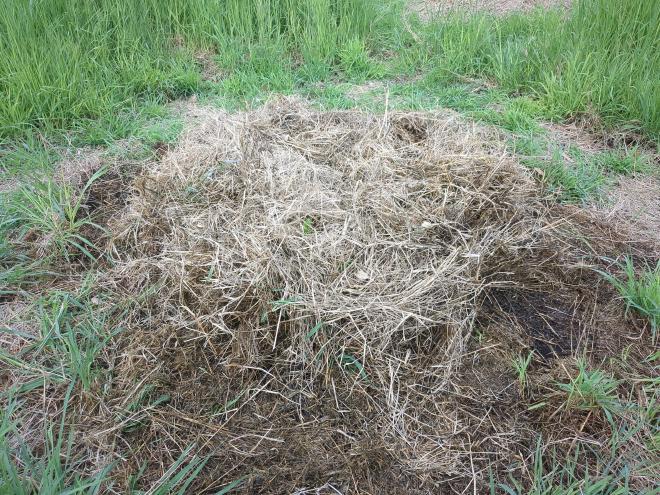
Using a hoe, chip out any surviving stragglers of grass. The majority has been killed by this point as the long grass on top has mostly suppressed the scalped grass below.
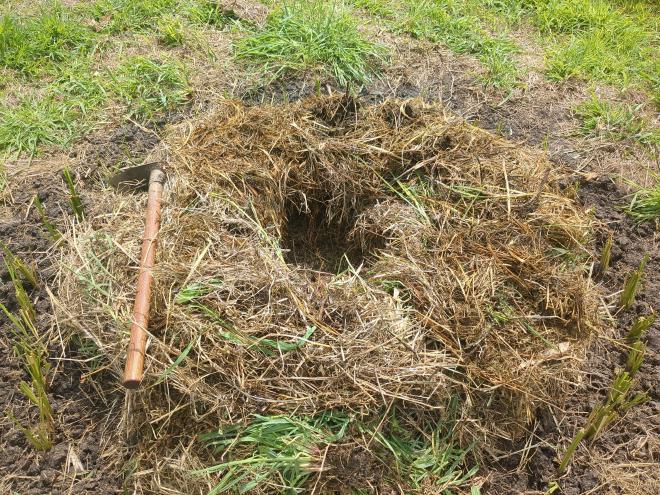
Now, while this technique is solid for an initial kill of existing pasture grasses (mostly Seteria in this spot), and over time more can be swept in once the grass recovers, it does rot quickly and tends to disappear over the cooler months. Vetiver with its slightly oilier leaves can last longer on the soil surface and should keep these young trees in ideal conditions for longer. In this situation, we are swapping out the weedy Seteria mulch for sterile Vetiver mulch once it establishes.
A standard Vetiver hedge is then chipped in around the existing mulch by raking the mulch more towards the centre and planting into the exposed grass-free soil.
Here is an older planting and you can see the mulch is disappearing and weeds/herbs increasing. Not a terrible issue but grass mulch does rot quickly which is where Vetiver has an advantage. Another advantage will be that the stiffer stems of the Vetiver when established will provide a windbreak to the younger tree.
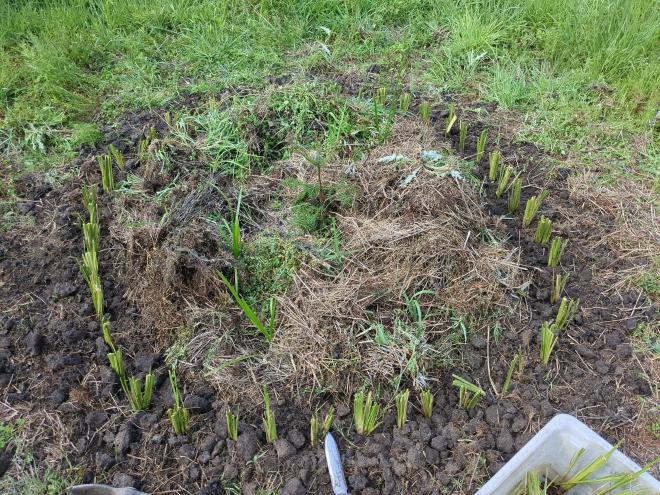
And here is one prepared earlier without Vetiver due to the lower light levels. Sweeping of grass, mass-planting Lomandra, more sweeping and weeding, and then nothing to do but watch the tree grow. Why you may ask? Exotic pasture grasses were brought in from the world over (Setaria being South African) because they are dominant, fast-growing species on any soil type they are selected for. Most young native trees can’t handle the competition, they aren’t adapted for it. Vetiver works because most of the roots grow down away from the top few critical centimetres of soil where all the action happens.
